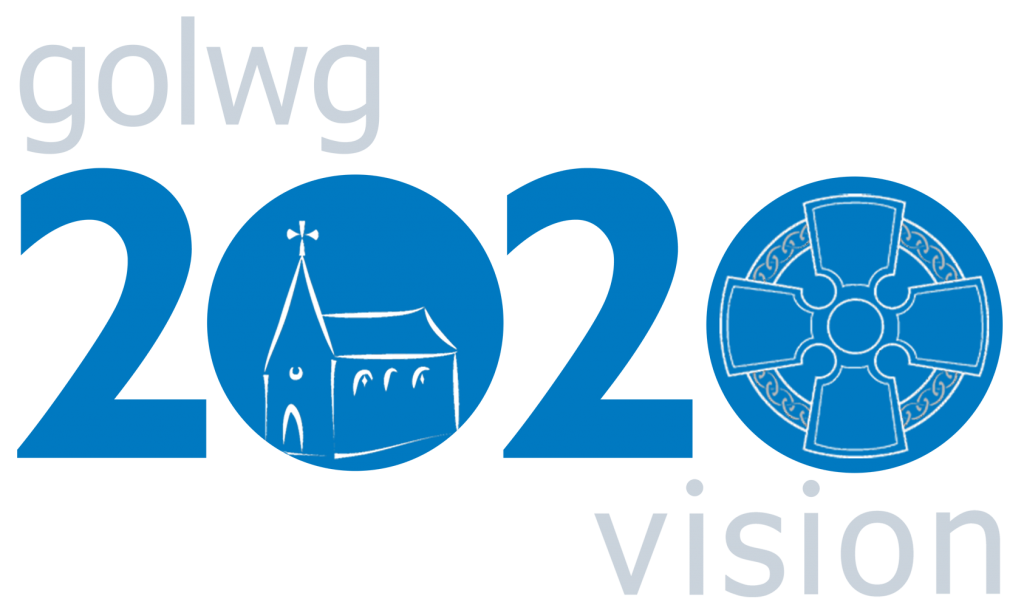2020 Vision

Serving community, inspiring people, transforming church.
Following the Church in Wales Review, exciting changes are underway in the Church in Wales as it approaches its centenary in 2020.
We’re taking a fresh look at our structure and ministry to see how we can best serve Wales in the 21st Century and make the most of our rich resources. Our vision is to be the prayerful heart of the community, sharing the Christian message in a way that engages, inspires and transforms.
Some of the changes are radical as we push the boundaries of long-established traditions while others are developments of ministry already taking place. All, however, are changes we as a Church identified and it will be in making them together that we will re-energise and re-invigorate our life and ministry across the country.
Ministry area progress symposium 2017
A symposium focussing on ministry areas and ministry area formation took place in Cardiff Bay on 30 June and 1 July 2017, bringing together around 50 delegates from across the province.
In advance of the event dioceses prepared articles setting out their own situations in terms of ministry area formation as well as their approaches to it. These articles were collated into a booklet for the symposium, which is available to view here:
Ministry Areas
The creation of “Ministry Areas” is one of the most radical changes we’re making. Traditional parish boundaries are being redrawn to make much larger areas which will be served by a team of people, both lay and cleric.
Ministry Areas reflect huge changes which have taken place in our society. The parish system, as originally set up with a single priest serving a small community, was put in place when people lived and worked in the same parish. All this has now changed – the communities to which people now belong are very varied and people travel freely.
Ministry Areas cover a broad geographical area. Rather than relying on individual clergy to minister to an increasing number of congregations, they are served by a mixed ministry team, some of whom are stipendiary ministers but most of whom are not. Some may be specialists in certain types of ministry, such as with young people or with those with little or no connection with the church. Individual churches, meanwhile, still have local leaders, who are part of the ministry team.
Ministry Training
A Ministry Area is a calling to all the people of God in a particular area to collaborate in their mission and witness, in which each brings their gifts for the service as a whole. Those called to ministry in such an area are called to live as an interdependent Christian community and to act as a team in which different skills will be brought together to complement and enhance one another. The ministry team is usually led by a stipendiary priest.
Training is underway to equip lay and ordained ministers to work in larger units as part of ministry teams and to develop specialised ministries.
Background
The Bishops commissioned a team of advisers in 2011 to conduct a root-and-branch review of the Church.
The three members of the team were:
- Lord Richard Harries, the former Bishop of Oxford, who chaired the group;
- Professor Charles Handy, former professor at the London Business School;
- Professor Patricia Peattie, former Chair of the Episcopal Church in Scotland’s Standing Committee.
The Review Group travelled to every diocese in Wales and met more than 1,000 people in public meetings to find out what changes they wanted to see. They also invited people to write to them with ideas for shaping the church of the future.
Separate meetings were held with senior clergy from each diocese, bishops’ advisers, ordinands and staff from Wales’ theological college, St Michael’s College, Cardiff, and senior staff from the Representative Body.
At the open meetings people were asked what aspect of both their diocese and the Church they felt most positive about and what changes they would like to see to make its ministry more effective. They were also asked how they would address challenges such as the predicted fall in clergy numbers and financial resources.